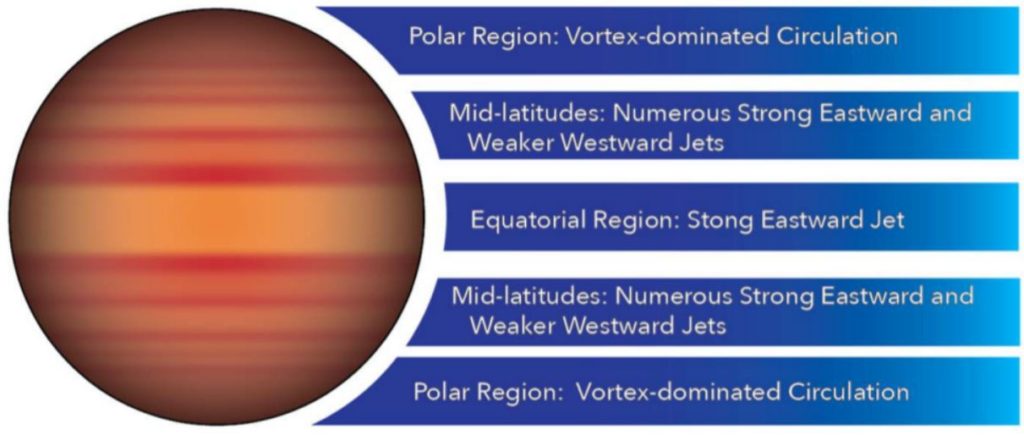Astronomers using the TESS space telescope were able to determine the atmospheres of the brown dwarfs closest to Earth, included in the Luhman 16 – Binary Brown-Dwarf System, have a division into latitudinal cloud belts, which makes them similar to Jupiter.
It is believed that the properties of the atmospheres of exoplanets and brown dwarfs, which occupy an intermediate position between giant planets and stars, are strongly influenced by the presence of clouds, while the properties of the clouds themselves are determined by dynamic processes in the atmospheres.
In particular, the presence or absence of clouds affects the local pressure and temperature profiles in the atmospheres of brown dwarfs. In addition, changes in the brightness of some objects of this kind can be explained by cloud cover of different thickness, for the formation of which, according to scientists, planetary waves may be responsible. However, long-term and reasonably accurate observations of large numbers of brown dwarfs are needed to test the theories.
A group of astronomers led by Daniel Apai of the University of Arizona published the results of an analysis of observations of the Luhman 16 system using the TESS space telescope from March 26 to April 22, 2019. The system itself is a pair of L and T-type brown dwarfs that have masses of 33.5 and 28.6 Jupiter masses and are only 6.51 light-years from the Sun. Earlier observations by another group of researchers allowed to determine that clouds can exist in the atmospheres of these dwarfs, in particular, latitudinal cloud layers (belts) should exist on Luhman 16A.
- Scientists in Fear of This New Predator From Red Sea Eating Native Species in Mediterranean
- Does This Mean We Stopped Being Animal and Started Being Human Due to ‘Copy Paste’ Errors?
- The One Lifestyle Choice That Could Reduce Your Heart Disease Risk By More Than 22%
- Aging: This Is What Happens Inside Your Body Right After Exercise
- Immune-Boosting Drink that Mimics Fasting to Reduce Fat – Scientists ‘Were Surprised’ By New Findings
In the new work, scientists by analyzing the light curve of dwarfs and comparing observational data with models wanted to understand what the structure of clouds in the atmospheres of dwarfs is.
Astronomers have concluded that both brown dwarfs are observed at angles close to their equatorial planes. The rotation period of the dwarf Luhman 16 A was estimated at 6.94 hours, and the atmosphere of Luhman 16 B, according to scientists, is similar to that of Jupiter and is formed by zonal circulation and high-speed flows.
Long-term variations in the light curve were interpreted as a contribution from the polar regions of the dwarfs, where vortices predominate. Thus, both brown dwarfs closest to Earth have a division of the atmosphere into latitudinal zones. It is expected that repeated observations of the system using TESS, scheduled for March – April 2021, will provide a more accurate understanding of the structure of the atmospheres of its components.

Daniel Apai et al. / The Astrophysical Journal, 2020
The article was published in The Astrophysical Journal.
